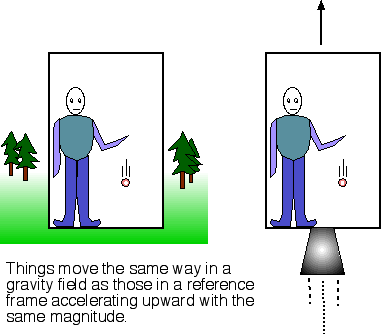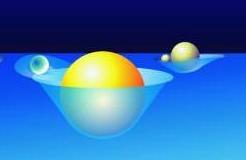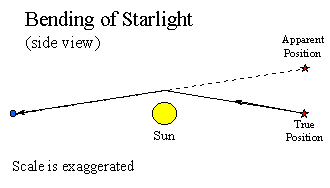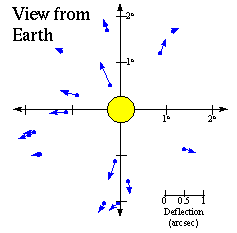Special & General Relativity
The theory of special relativity lays down two basic principles. First, that the laws of physics are identical in all constant frames of reference. Secondly, that the speed of light is constant no matter what your point of reference.
 This implies a few really wacky effects:
This implies a few really wacky effects:
1) The length of an object decreases as its speed increases.
2) Clocks passing by you run slower than clocks at rest.
3) The mass of an object increases as it moves faster.
The concept of 'spacetime' is born.
Einstein was good at thinking way outside the box. His 'thought experiments' (Gedankenexperiment) lead him to this new physics. Einstein went on to think up other relativistic ideas, such as the "equivalence principle". In the diagram to the right, the person experiences 'gravity' in both boxes, but only in the left panel are they in a true gravitational field. Even gravity was a matter of 'relative perspective'.
 This insight lead Einstein to develop his
This insight lead Einstein to develop his
Generalized Theory of Relativity (Einstein, 1915)
General Relativity unified the laws laid down in Special Relativity with those previously understood about Gravitational theory (Newton). It proposes that the force we know as 'gravity' is merely a manifistation of the geometry of spacetime, which is warped by the presence of matter. Einstein theorized that smaller masses travel toward larger masses not because they are "attracted" by a mysterious force, but because the smaller objects travel through space that is warped by the larger object. They follow a direct path, in curved space.
Experiments demonstrating General Relativity:
1) Light is deflected by the Sun's Gravitional curving of space. (Famous Eclipse of 1919)
 |
 |
3) The spectra of stars show 'gravitional redshifts' as predicted by GR.